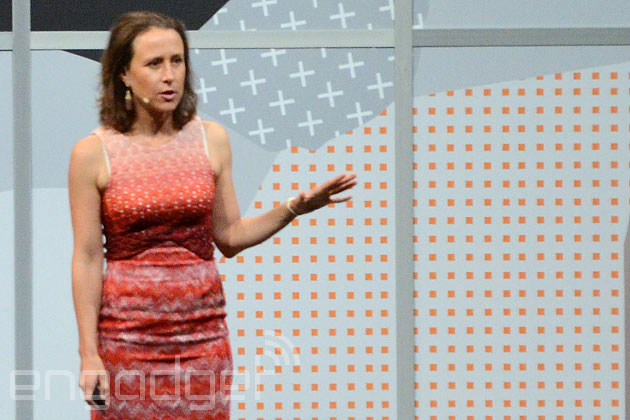good, balanced diatribe..
http://www.linkedin.com/today/post/article/20140408142414-23027997-severe-obesity-let-em-eat-kale
Severe Obesity? Let ‘Em Eat Kale!

The tale of aristocratic indifference on the part of Marie Antoinette, Queen of France at the time of the French Revolution, wife of Louis XVI, is, we now know, likely apocryphal. Still, like many historical distortions, this one reverberates through modern culture just the same, and harbors meaning as archetype, if not as reliably archived fact. You no doubt know the tale:
The peasants were starving and had no bread. Marie allegedly suggested: “let them eat cake!”
We find a modern day analogue in the advice dispensed by foodie elite who suggest that the masses should just eat “real” food. The definition of “real” is generally left open to interpretation- but of course, Marie never said what kind of cake, either.
The connotations of “real” are clear enough: pure, unpackaged foods; those icons of nutritional virtue about which the wholesome truth is so self-evident that ingredient lists and nutrition fact panels are superfluous. Wild salmon comes to mind. And broccoli, presumably organic. And fresh berries.
In other words, since the people have no whole-grain bread: let ‘em eat kale!
Now, frankly, I’m quite partial to kale. And, for that matter, the potentially even more nutritious fiddlehead ferns. But I have a real antipathy for fiddling around, or issuing jejune exhortations, while Rome is burning. And burning, it is.
For those inclined to celebrate the recent and radically distorted ping about childhood obesity rates ‘plummeting,’ came this week’s predictably countervailing pong: they have not plummeted after all. More importantly, the most recent paper on childhood obesity trends shows that severe obesity is rising disproportionately.
That’s worth reiterating: whatever is happening to overall obesity rates, rates of severe obesity are rising briskly in children. Prior research had already indicated that was true in both children and adults, so speaking of cake, this is really just icing on what was already well baked. But we seemed in need of a timely reminder.
Fundamentally, this means that it may no longer help us much to ask and answer: how many Americans are overweight or obese? That number, or percentage, may now be level and rather uninteresting, if only because it is pressed up against the ceiling. To gauge the severity of hyperendemic obesity in our culture, we may now need to ask: how overweight and obese are the many?
The answer, ever more often, is: severely.
That severe obesity rates are rising steadily and perhaps steeply has two flagrant implications. The first is that we are not doing nearly enough at the level of our culture to make eating well, being active, and thereby controlling weight the prevailing norm. These two behaviors and one outcome remain exception rather than rule, costing us dearly- in every currency that matters, human potential above all.
The second implication is that we need good treatments for severe obesity, since it is already well established among us.
I have first hand experience with severe obesity, in adults and kids alike. Unlike garden-variety weight gain, severe obesity generally occurs in the context of diverse hardships. Sometimes, there is the duress of a dysfunctional family dynamic. Sometimes there is an underlying mental health problem. Sometimes the propagating factors are preferentially, if not exclusively, socioeconomic: a rough neighborhood, with lack of access to “real” food and recreational opportunities, and the inevitable clustering of fast food franchises. That latter peril makes me think of wolves surrounding the most vulnerable member of a herd. Almost inevitably, there is ridicule, disparagement, and disadvantage; the literal, daily addition of insult to injury.
Bariatric surgery is effective treatment for severe obesity, and I have long advocated strenuously that it should be available, and reimbursable, for all who truly need it. But meaning no disrespect to the surgeons who provide or patients who receive it, it’s a rather poor option and should be a last resort, not a first, especially for children. The surgery is potentially major, and thus encumbered by all of the customary risks. The long-term effects are far from perfect, and substantially unknown for children. The monetary costs are apt to be unmanageable if this becomes the “go to” solution for an increasingly prevalent problem.
And most importantly: nobody learns anything under general anesthesia. The root causes of severe obesity are not addressed with scalpels. There is no way to share the benefits of a redirected gastrointestinal tract. In contrast, “skillpower” can be shared. A systematic effort to empower those most in need with the skills and resources needed to eat well, be active, lose weight, and find health- physical and mental- would allow for paying it forward, to family and friends, and the next generation. The good of surgery is contained within a body. The good of propagating skills and resources for healthy living reverberates throughout the body politic.
My friend David Freedman, the highly accomplished health journalist, and I have had a spirited and fairly public exchange on the topic of “getting there” from here. When Mr. Freedman suggested that better junk food could be part of the answer, I protested: anything that is genuinely part of the solution is, by definition, no longer junk. When I emphasized the importance of knowing what dietary pattern is best for health, Mr. Freedman parried back that I might be diverting attention from the critical need to pave a way of getting there from here, accessible in particular for those currently most forestalled.
But in the end, our private exchanges indicated that our public argument was mostly smoke and just about no fire. We both agree that we can’t have good diets supporting good health if we don’t acknowledge we know what a good diet is. And we both agree that knowing that “real” food is good does just about nothing to help modify and improve the diets and health of real people.
For that, we need an expansive cultural commitment; a movement; perhaps even a revolution. We need approaches to severe obesity that don’t just fix it after it happens. Big Surgery and Big Pharma may be beneficiaries of this, but the rest of us will be in one helluva fix. The better way is introducing innovative solutions that confront it at its origins and spread of their own accord.
We need to reorient our cultural attitude about obesity so it is not an excuse to argue the respective merits of personal responsibility and public policy. Rather, if we are to fix it at its origins, we need to acknowledge that people who are empowered are most capable, and most inclined, to exercise responsibility. So let’s build it, and see what comes.
We can, and should, empower people to trade up the food choices they are already making.Better chips may not satisfy the purists, but the evidence is in hand that improving food choices- even among the homely fare that comes in bags, boxes, bottles, jars, and cans- adds up to make a truly important difference for populations, and individuals alike. This can be done without spending more money, urban legend to the contrary notwithstanding. Still, we could likely accomplish far more by combining nutrition guidance systems with financial incentives that encourage their use.
Among such approaches, too, are community and New-Age approaches to gardening that might even allow many more of us to grow our own kale- and perhaps fiddlehead ferns.
But “let ‘em eat kale” simply won’t do. It’s fatuous, unrealistic, elitist nonsense. It’s fiddling around. And all the while, Rome burns.
-fin






